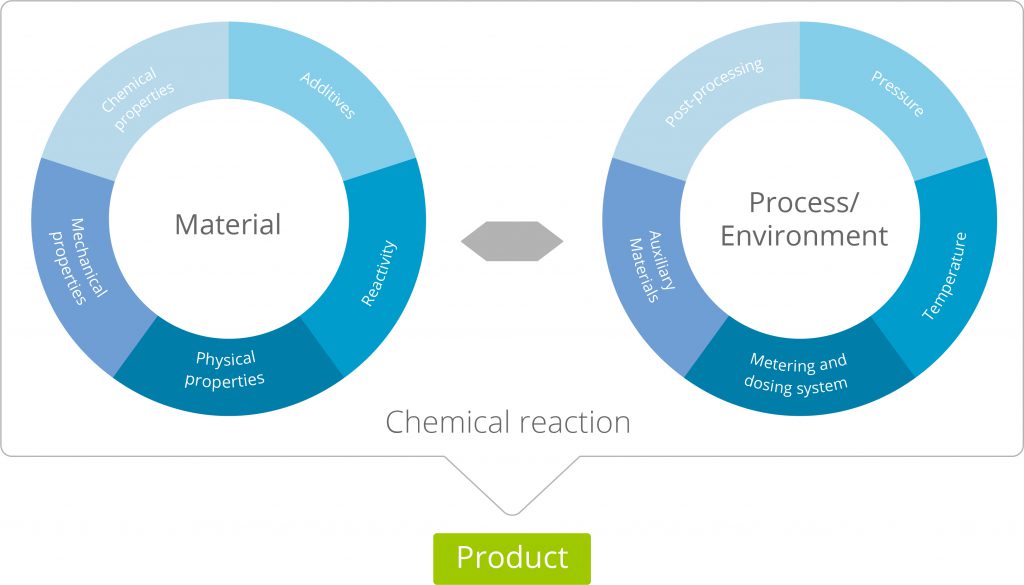Process-near material characerization
Reactive plastics are used in various forms in a wide variety of applications. The most common material systems are unsaturated polyester resins (moulding compounds, laminating resins), polyurethanes (mattresses, seat cushions, thermal insulation panels, compact trim parts, surface or adhesive applications) or epoxy resins (thermal insulation, adhesives, composite components). The plastics are used as one-component (1K) or two-component (2K) systems plus optional additive materials (e.g. catalysts, release agents, impact modifiers) and exist as liquid or pasty systems in their initial state. The chemical reaction and the resulting products are significantly influenced by the materials used as well as the process and environmental parameters (Fig.).

A major challenge for the reproducible use of these reactive plastics and a successful prediction of the resulting component properties is the precise coordination of the material properties of the starting components and the production process itself. For this it is necessary to have the knowledge of the chemical reaction and its influencing factors. However, modern materials and production processes are very challenging in terms of the complexity of the reaction and the process control. Thus, a simple property prediction and the pre-selection of material systems that meet the requirements on a purely theoretical basis is currently almost impossible. Therefore, there is a need to map the exact process conditions during the material analysis and determination of characteristic values (process-near material analysis).
The scientific basis for the process parameter-dependent property spectrum of reactive plastics is the result of ongoing research and is continuously driven forward. Thus, the complex interrelationships for different material systems are not conclusively understood. The measuring instruments necessary for a process-near material analysis hardly exist, if at all, as highly specialized and complex in-house developments in research institutions.
In the following scientific publications you can read more about the topic:
Sahagun, C. M.:Molecular Network Development of a Thermosetting Epoxy-Amine Polymer
